Young people’s mental health and wellbeing is a major concern with almost 40% of 16–24 years old experiencing mental health struggles over the course of a year. Around a third of these young people have not sought professional support. There are numerous systemic barriers that result in an urgent, unmet need for early intervention and youth-centred services for around 1 million young Australians.
PEERCHAT PARTICIPANT FEEDBACK
“It was cool because I felt I was in control. We talked about ways that I could manage some of my feelings, and my peer worker shared what had worked for them in the past. It was such a good place to start for me so I could look out for myself better.”

Outcomes & Impact
PeerChat helps hundreds of young Australians each year to overcome systemic mental health support barriers when they need it most.
In the first six months and over 1,000 chats, young people reported a 73% improvement in wellbeing and gave the service an 8.2 out of 10 star rating.
PeerChat can reduce distress, increase mental health knowledge, and positively influence the way young people feel about themselves and others. It enhances the wellbeing of young people through connection, understanding, and hope. Its digital, anonymous, and one-on-one nature improves accessibility for our most vulnerable communities. Importantly, it’s an exemplar for the value of people with lived experience to co-produce and deliver safe services that are highly personal while being relevant and inclusive for the diverse nature of humanity.
73%
Improvement in wellbeing
8.2 out of 10
Service user rating
Improved User Engagement
Interactive elements and dynamic storytelling components foster deeper connections.
Working hand in hand with online mental health service ReachOut, Steve Sullivan from How to Impact and myself conducted research into the specific support needs of young people with mental health struggles over a 12-week period. We then developed design guardrails for possible service models, ensuring the creation of a relevant and useful service.
3 targeted co-design sessions and 2 online service experiments found that what young people needed most was for someone to listen and validate their struggles. One-on-one online chat with a trained peer emerged as their preferred method.
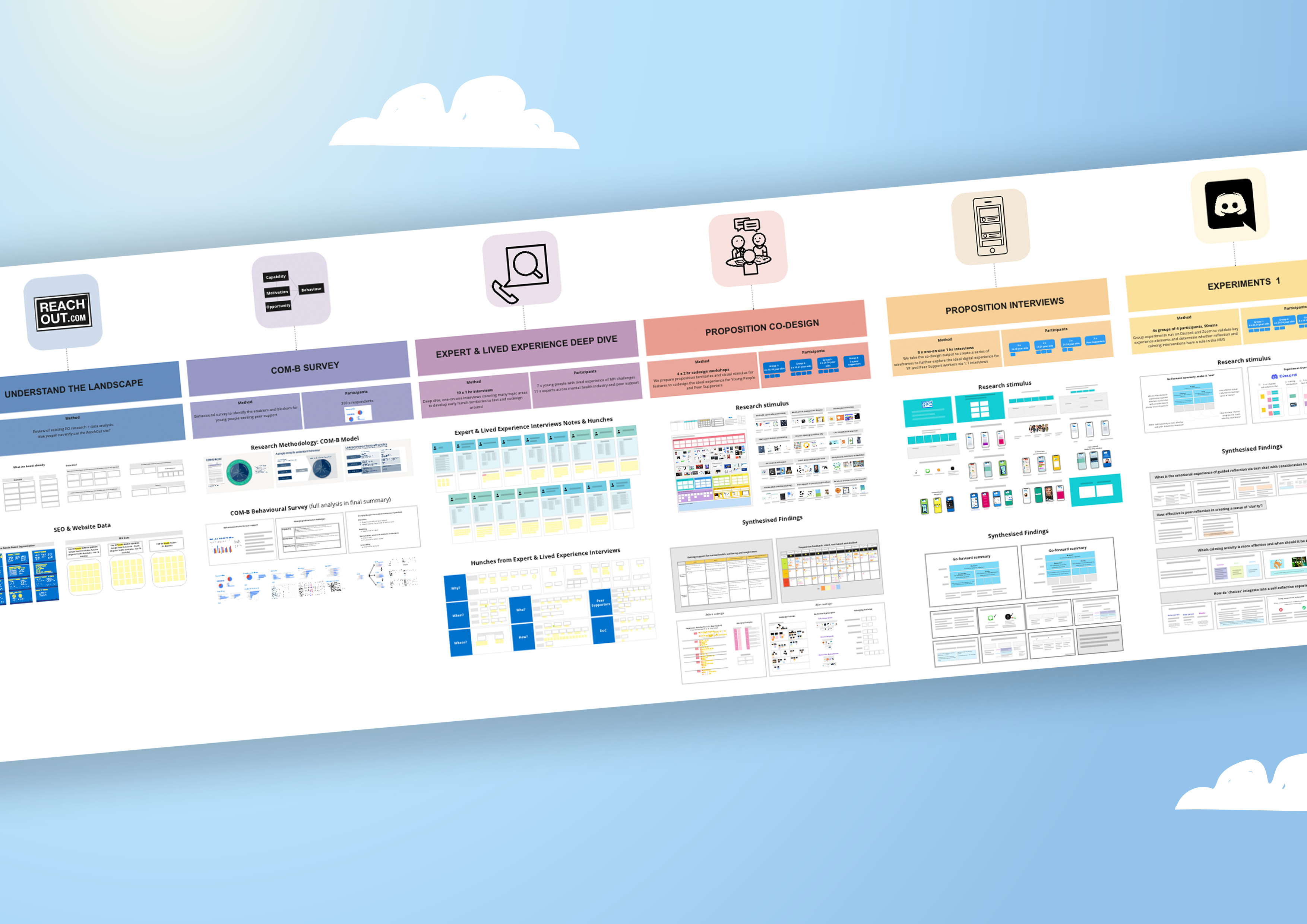
Innovation Sprints
Over 7 weeks of innovation focused codesign sprints, we uncovered young people’s support needs for a mental health service design that improves emotional wellbeing.
Service Design
We codesigned a peer worker service model, involved the peer community in testing and service pilots, and created operational procedures. Steven was the lead on this part of the project.
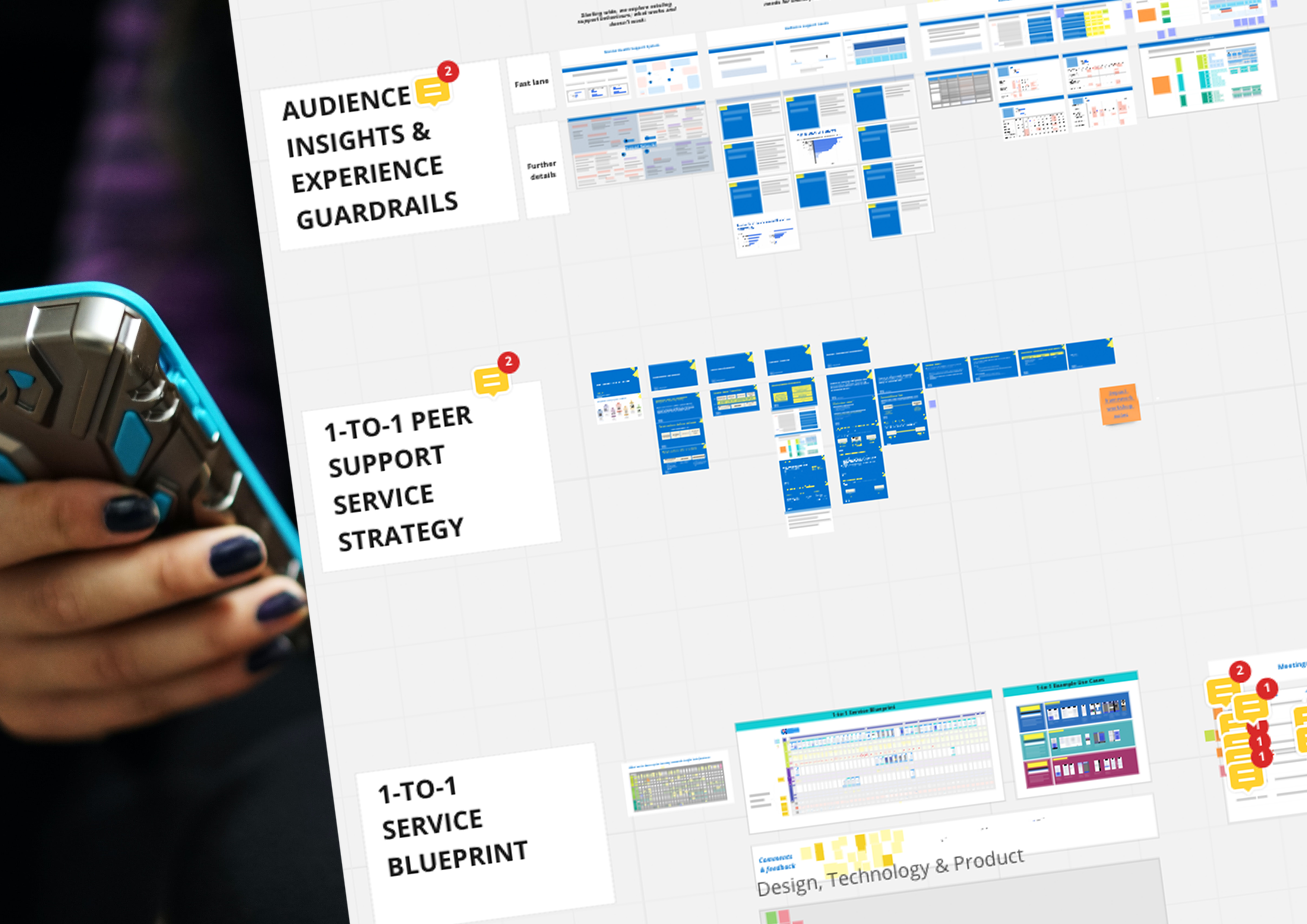
Once the service model was uncovered, I created a blueprint and led the ReachOut team through a codesign process towards an ideal product design. The user experience was, again, tested extensively with young people, and I collaborated with the ReachOut tech team to create final designs that were effective for them to build. Deepend’s Jackie-Lee Hughes contributed to the User Interface design.
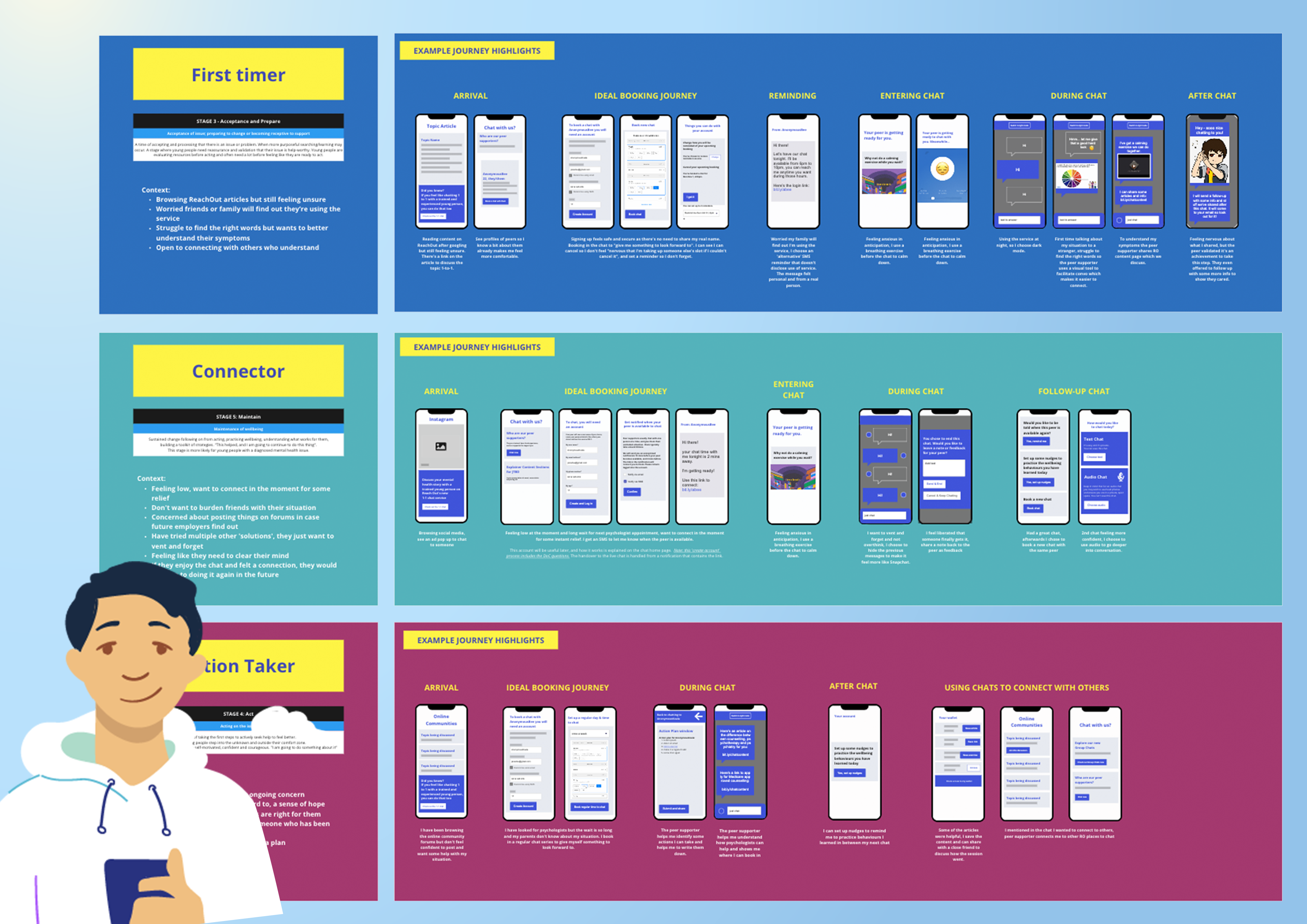
From Insights to Features
From our co-created design vision and guardrails, we developed three distinct use cases that our service model answers.
Product Design
Through prototype-based codesign techniques, we progressively evolved a design with a booking system, onboarding and chat that answer to specific support needs.
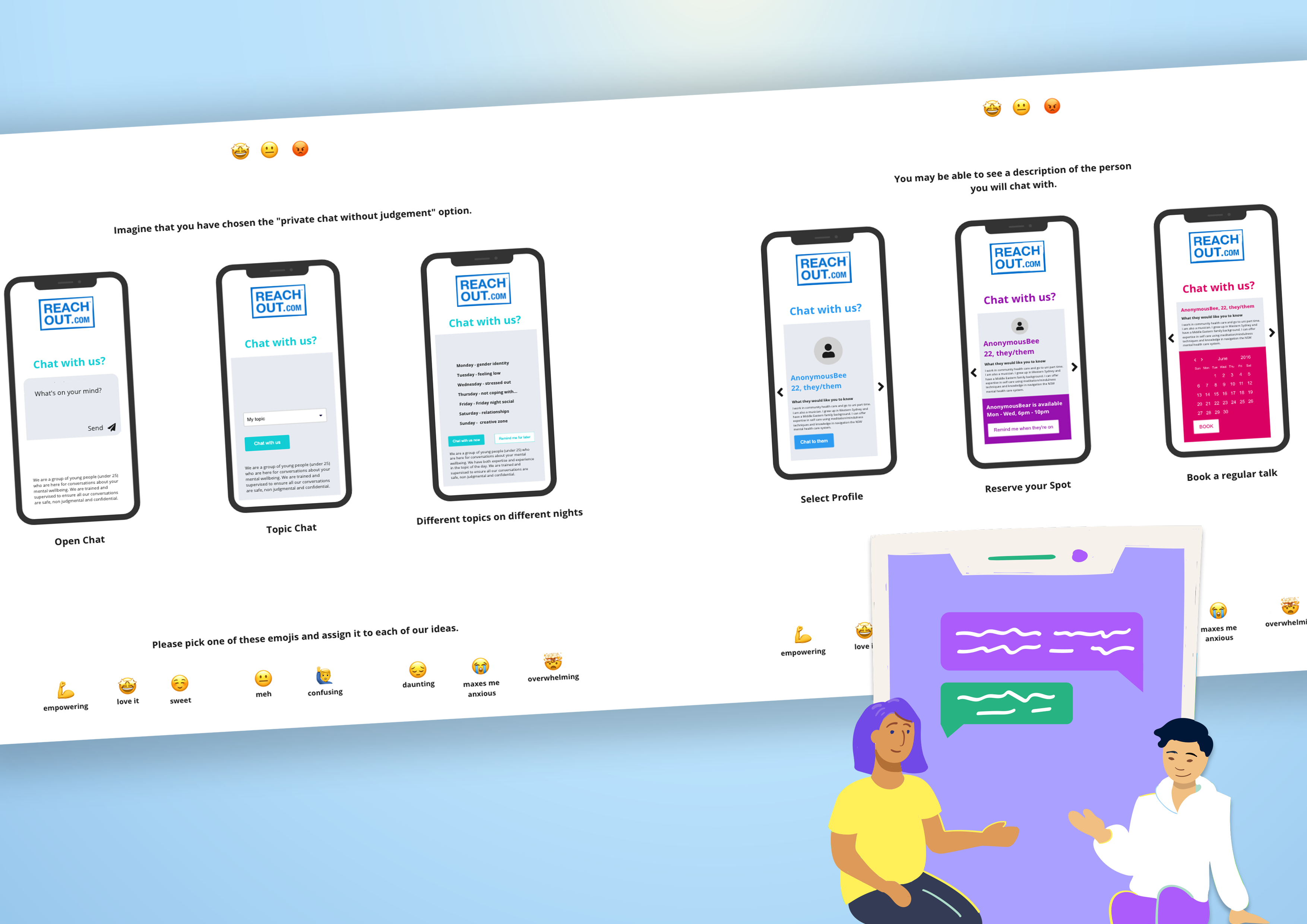
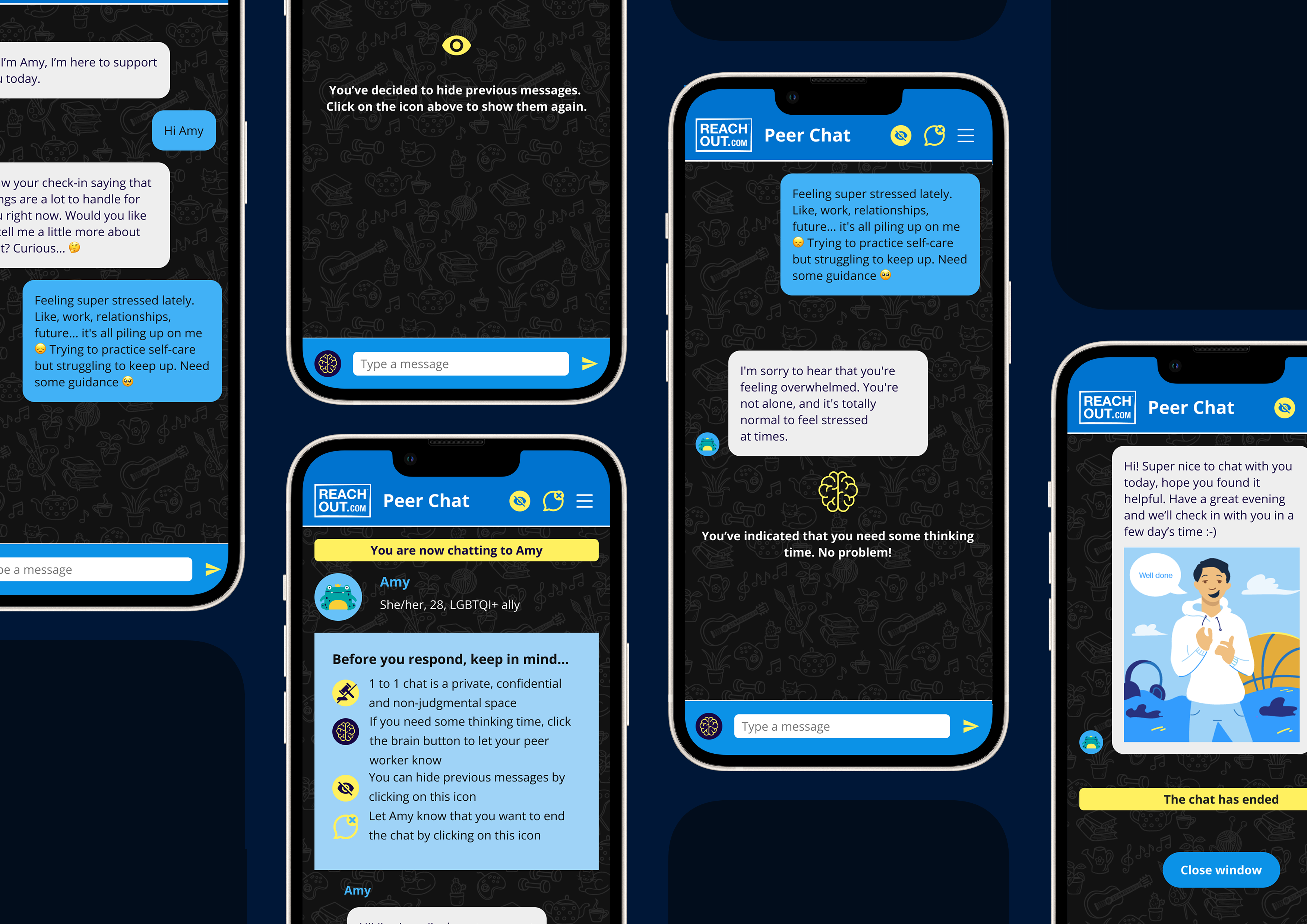
Text Chat for Better Mental Health
Our text chat design includes innovative health focused solutions such as the ability to hide previous messages from view to avoid re-triggering and the ‘I’m thinking’ button that gives support seekers time while ensuring supporters are informed that everything is okay.
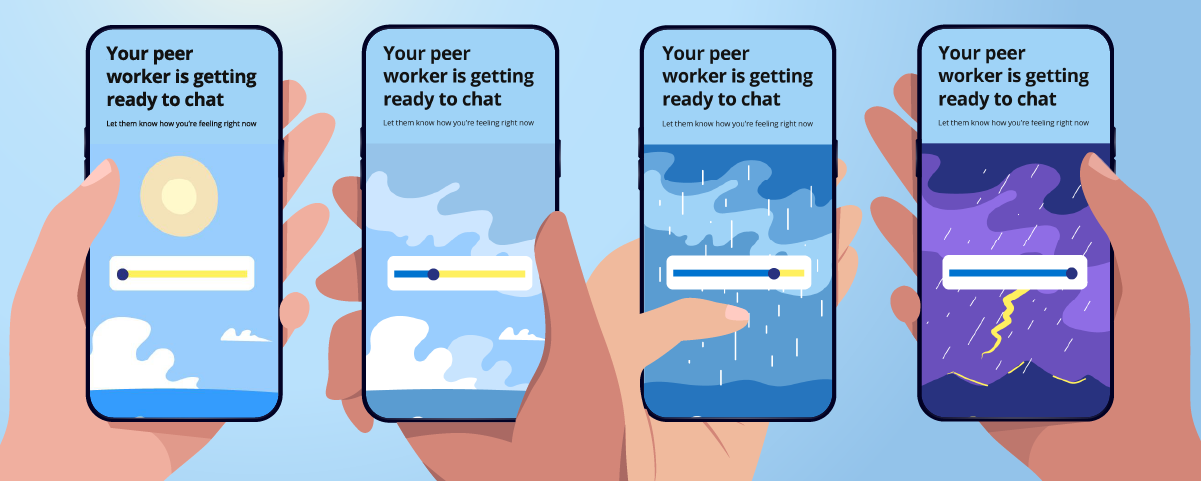
Emotional Wellbeing by Design
To ensure that users’ emotional wellbeing is enhanced, we augmented the main chat functions with a variety of innovative designed interventions, such as this calming onboarding interaction that reduces anxiety on starting the support chat.
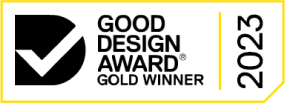
Good Design Awards
Service Design
Gold Winner

Good Design Awards
Social Impact
Winner

Good Design Awards
Digital Design – Apps & Software
Winner

Designers Australia Awards
Interact
Category Winner
